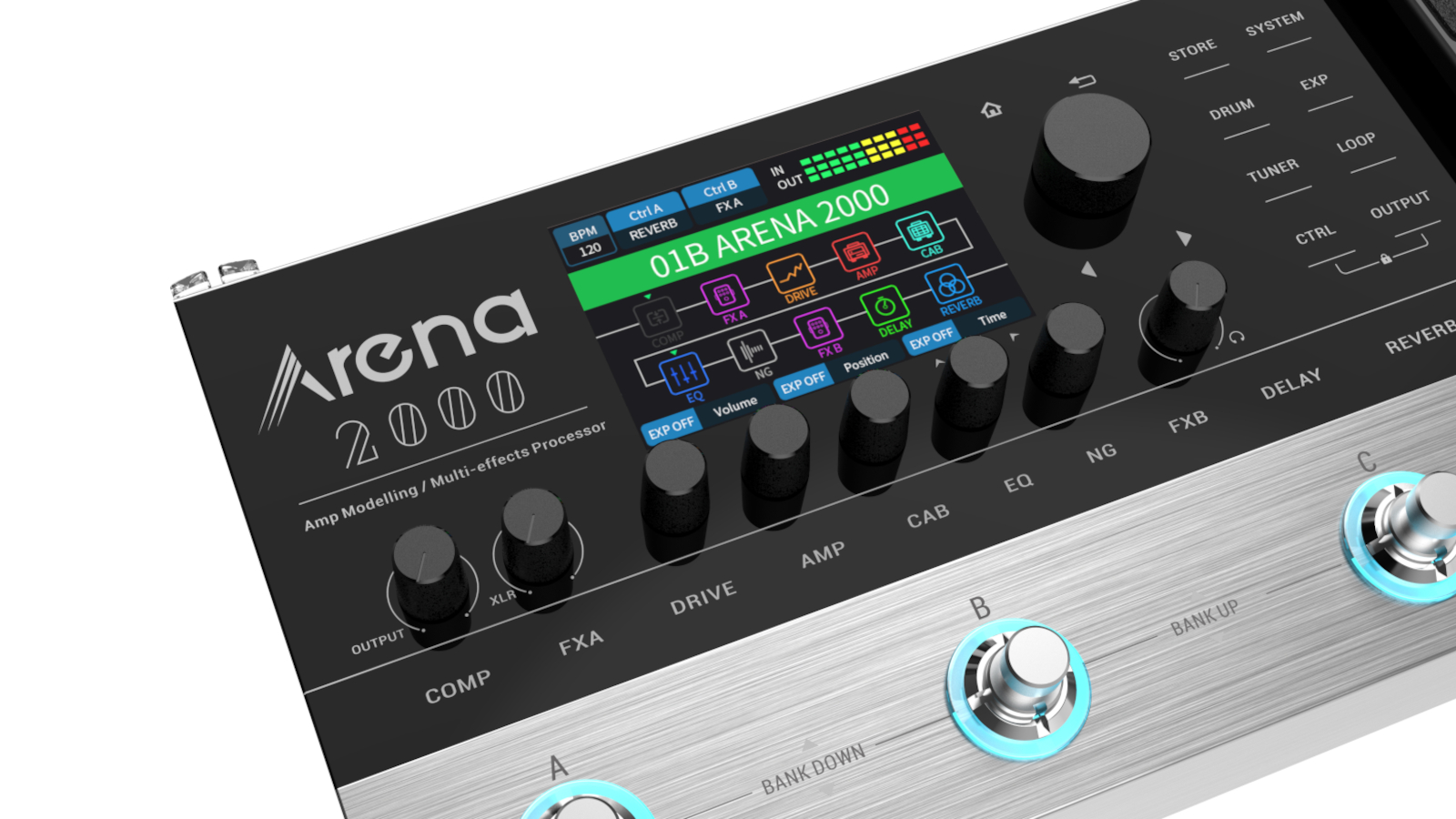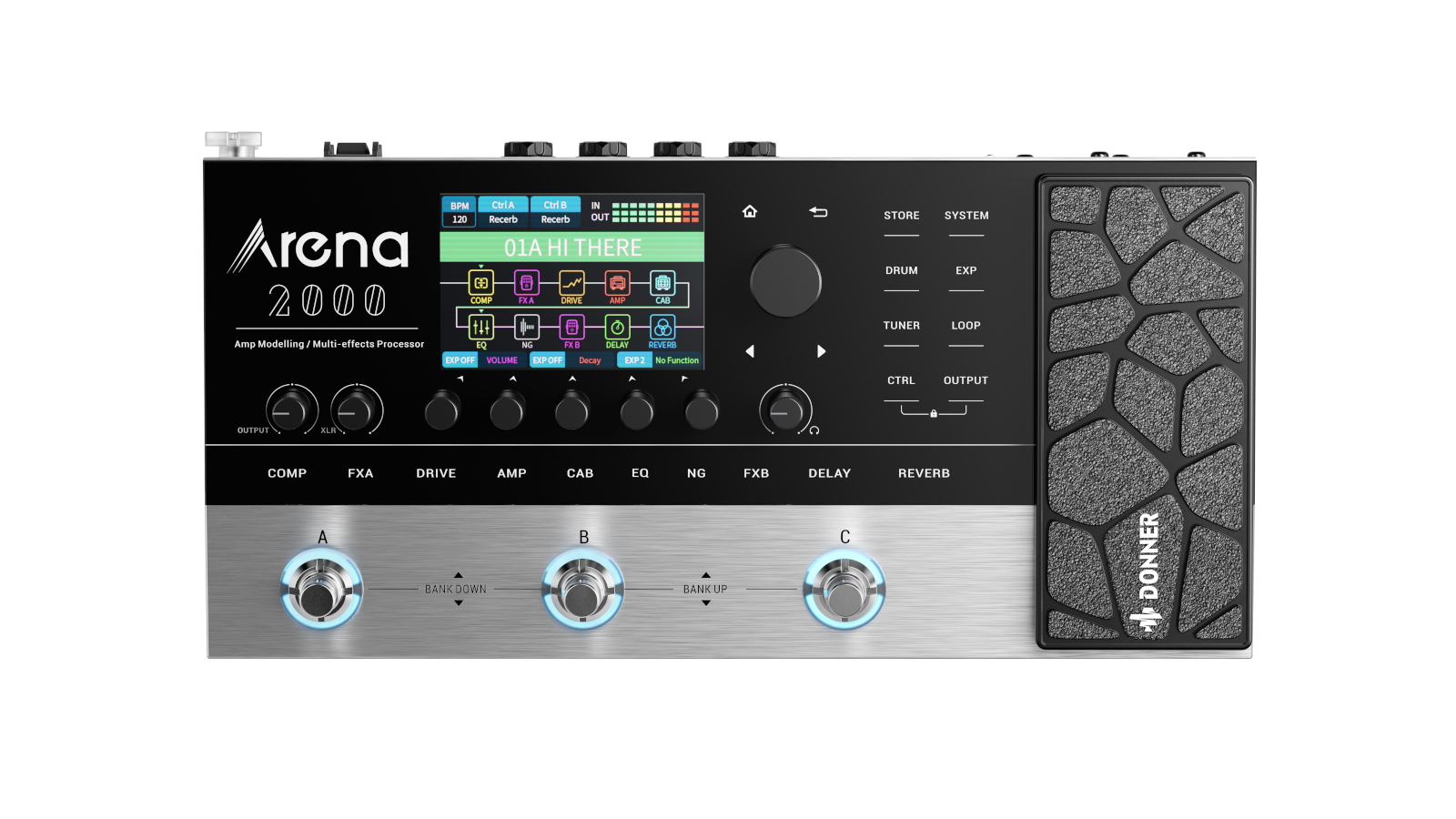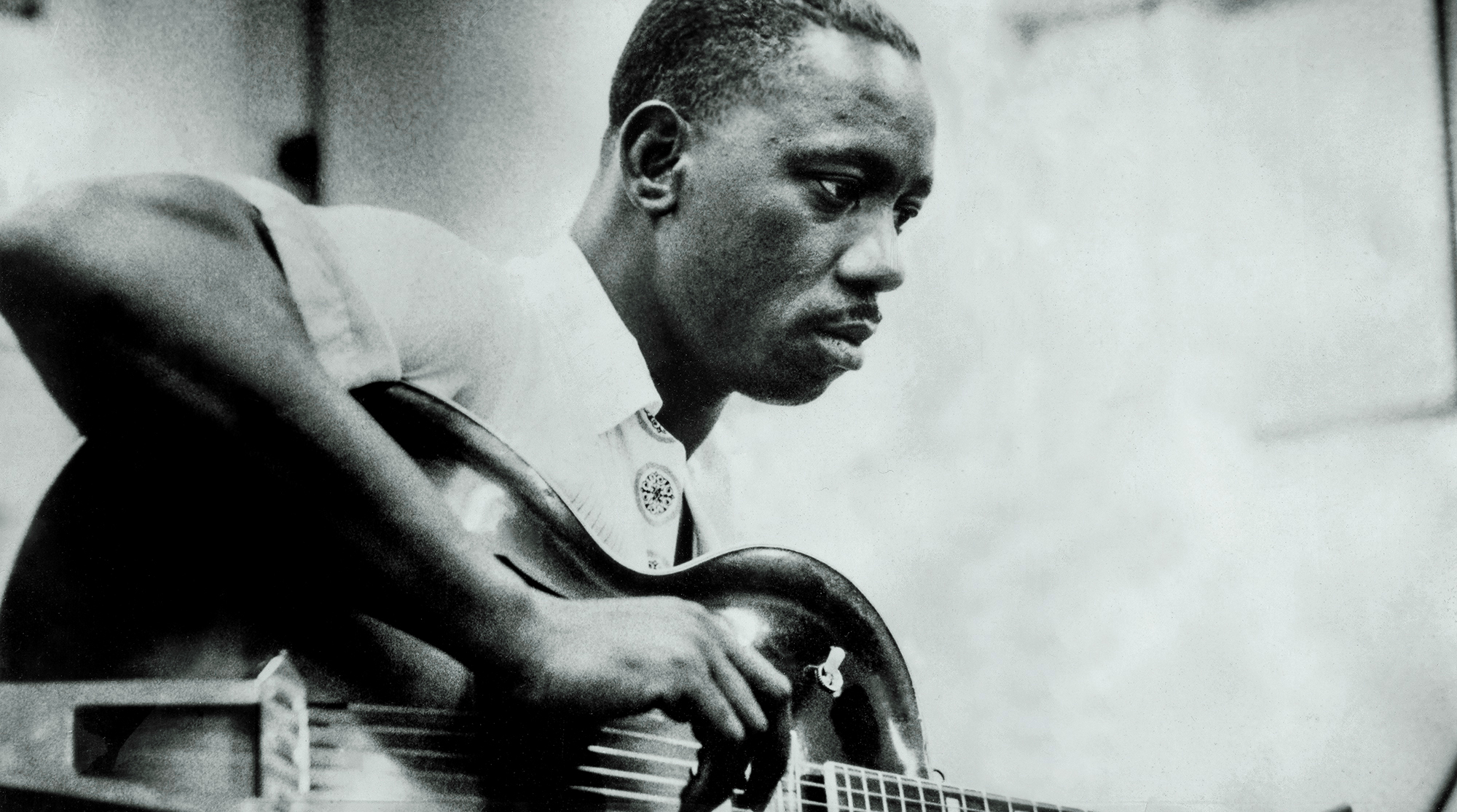GuitarPlayer Verdict
A ton of fun and an impressively versatile entry-level amp and effects pedal
Pros
- +
Well built and budget-friendly
- +
Offers an impressively wide range of presets and some surprisingly usable sounds
Cons
- -
No FX loop
- -
Factory presets ascend somewhat randomly
You can trust Guitar Player.
As impressively compact all-in-one rig solutions continue to become more feature-packed and more affordable, Donner Music has fired a noteworthy volley into the fray.
The Chinese gear maker’s Arena 2000 is a floor pedal delivering effects, amp and cab sims, and a massive bundle of functionality and connectivity, all for about the price of a mid-level single-effect boutique stompbox, making it a prime contender for guitarists shopping in the booming entry-level end of this market.
We’re getting used to jaw-dropping feature complements in these things by now, but even so, the Arena 2000’s list of bells and whistles is rather astounding. The unit packs 80 amp models, 50 cab IR models (with 50 slots for loading third-party IRs) and 278 effects, all easily editable right from the unit itself.
One of the things that impressed me upon unboxing the Arena 2000 was the general robustness of its construction
There’s also a built-in drum machine with 40 patterns and 60 loops, as well as a tuner, and it can all be configured into 50 banks of three presets each – 150 presets in all, but others can be stored and easily swapped in and out via Donner’s Control app for Windows and MacOS, which also allows remote preset editing.
Given the bounty stuffed into this 11.5 by 5.5 by 1.5–inch box, at this price you might expect to find a plastic enclosure with iffy switches, knobs and connectors. But no. One of the things that impressed me upon unboxing the Arena 2000 was the general robustness of its construction.
I can’t vouch for its longevity on a 50-date road tour, but the brushed aluminum panels, metal ends and underside, and the rugged latching foot switches inspire confidence.

Central to the top face, a three-by-two-inch screen provides visualization of control settings and movable/editable FX, amp and cab blocks.
All the latest guitar news, interviews, lessons, reviews, deals and more, direct to your inbox!
Traditional rotary knobs offer control over ¼-inch and XLR outputs, five variable parameters (most of these are multi-function, as we’ve come to expect), headphone out and aux-in levels, and preset scrolling and editing (via a large value knob).
Given the limited size of the unit’s back panel, Donner has squeezed in an impressive bundle of connectivity options
Several other functions are accessed by touch-screen buttons. There is also a compact rocker pedal for volume, wah-wah, and other expression-pedal functions. Three stomp switches allow for preset A/B/C selection and bank-up/bank-down, as well as other alternative functions.
Given the limited size of the unit’s back panel, Donner has squeezed in an impressive bundle of connectivity options. In addition to the single ¼-inch input, stereo outputs are available on both balanced XLR and unbalanced ¼-inch jacks with a ground lift switch for the former. A TRS jack accepts a second expression pedal or two more foot switches, plus there’s a DIN for MIDI in, USB Type-C for direct recording and software access, Aux In and headphone out on 1 /8-inch jacks, and an input for the 9VDC/500mA power supply, which is included.
Absent is any kind of FX loop, as many contemporary modelers offer for incorporating favorite external reverb, delay and modulation effects.


There’s neither scope nor space to list every amp, effect and cab included in the Arena 2000, nor to provide a detailed how-you-use-it guide here, but suffice to say the operation is simple, and will be likely intuitive to anyone who has used modeling amp and/or effects units in recent years.
Amp-wise, the Arena 2000 is packed with a familiar list of vintage classics and popular boutique models
And fired up right out of the box, the Arena 2000 presents 50 factory-loaded banks with three presets each, which might be about as much as many new users need to be getting on with for a while anyway.
I tested the Arena 2000 with a Gibson 1959 Les Paul reissue and a Fender 1954 Telecaster reissue using headphones, both directly from the unit and via a Universal Audio Apollo Twin Duo recording interface, and with studio monitors.
To be honest, I was expecting at best some grins and giggles from the easy jam potential you get with a sub-$275 box of budget-grade sonic tricks, but there are some entirely usable sounds in here, and plenty of fun to be had besides.
Amp-wise, the Arena2000 is packed with a familiar list of vintage classics and popular boutique models. As I find with many lower-priced units, some of the most viable tones are in the high-gain presets, and particularly so with lashings of reverb and delay slathered on.
I’d largely be happy tracking or performing some arena-rock lead antics with a few of the Boogie, Marshall JCM800 or Soldano lead presets I found in here.
Clean sounds were generally less convincing but still respectable enough considering the investment, and the variety of everything available from the effects and settings variables won’t leave you hanging.
Arena 2000 is a ton of fun and an impressively versatile entry-level amp and effects pedal
As for parameters and sonic flexibility, I was rather surprised by the amount of tone crafting the unit provides. For example, using a “Mar 1960B 4x12” cab and twisting the cab-mic selector from a Shure SM57 dynamic mic to a Royer R121 ribbon to an AKG C414 condenser, and others, brought significant foundational changes to the overall sound and presented a very usable tool for fine-tuning my tone.
The same was true for amp and effects parameters. Put it all together and there is some powerful editing to be had here.
As set up out of the box, the factory presets are organized into a somewhat random run of quite different sounds through ascending banks and presets, rather than grouped into banks of Marshall clean, Marshall crunch and Marshall lead, for example, but that’s easily rectified by creating and storing your own user presets.
And although for overall sonic depth and dimension and playing dynamics, the Arena 2000 doesn’t touch upper-echelon units like the Fractal Axe-FX series, Neural DSP Quad Cortex or Line 6 Helix range – all units I’m more familiar with in studio use, at least – I wouldn’t expect that at this price.
As it is, Arena 2000 is a ton of fun and an impressively versatile entry-level amp and effects pedal.
Specifications
- CONTROLS: Output and XLR levels, five rotary parameter controls, headphone level, value/ preset scrolling knob; three preset/bank foot switches; rocker pedal for volume, wah-wah and expression; myriad touch-screen buttons for parameter selection and editing
- CONNECTIONS: ¼” input, ¼” and XLR outputs, expression pedal/FS4-5 jack, MIDI in, USB Type-C, Aux In, headphone out, power in
- POWER: 9V DC at 500mA, power supply included
- BUILT: China
Visit Donner for more information.
Dave Hunter is a writer and consulting editor for Guitar Player magazine. His prolific output as author includes Fender 75 Years, The Guitar Amp Handbook, The British Amp Invasion, Ultimate Star Guitars, Guitar Effects Pedals, The Guitar Pickup Handbook, The Fender Telecaster and several other titles. Hunter is a former editor of The Guitar Magazine (UK), and a contributor to Vintage Guitar, Premier Guitar, The Connoisseur and other publications. A contributing essayist to the United States Library of Congress National Recording Preservation Board’s Permanent Archive, he lives in Kittery, ME, with his wife and their two children and fronts the bands A Different Engine and The Stereo Field.


